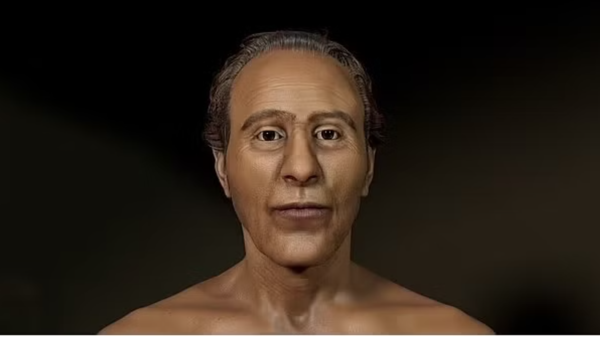Scientists From Egypt And Britain Reveal The True Face Of Pharaoh Ramesses II

A team of archaeologists managed to build the "handsome face" of the powerful pharaoh of ancient Egypt, Ramesses II, and it became visible for the first time in 3,200 years.
Scientists from Egypt and England collaborated to "capture" the image of the king at the time of his death, using a 3D model of his skull to reconstruct his features.
Then they reversed the aging process, turning back the clock nearly half a century to reveal his face at the height of his youthful vigor. The result is the first scientific "face reconstruction" of the pharaoh based on a CT scan of his actual skull.
Sahar Selim of Cairo University, who created the 3D model of the skull, said the result revealed a "very handsome" ruler. My imagination of the face of Ramesses II was influenced by the face of his mummy.
However, facial reconstruction helped to put a live face with a mummy. I find that the reconstructed face is that of a very handsome Egyptian with the characteristic facial features of Ramesses II – the clear nose and strong jaw.”
Caroline Wilkinson, director of the Facial Laboratory at Liverpool John Moores University, who reconstructed the pharaoh's visage, described the scientific process: “We take a CT model of the skull, and it gives us the 3D shape of the skull that we can feed into our computer system. Then we have a database of pre-designed facial anatomy that we import and then adjust to fit the skull. So we basically build the face, from the surface of the skull to the surface of the face, through the muscle structure, the fat layers, and then finally the skin layer.”

She continued, “We all have roughly the same muscles from the same origins and the same attachments. And since we each have slightly different dimensions and shape than our skull, we will have slightly different shapes and proportions of the muscles, and this will directly affect the shape of the face.”
This project is the second of its kind that Sahar has recently supervised, after a scientific reconstruction of Tutankhamun's face, which was carried out by royal sculptor Christian Corbett.
King Ramesses II was a warrior who ruled Egypt for 66 years and initiated the world's first treaty.
However, reconstructing the face of a long-dead pharaoh is not without its challenge.
For example, the skull alone cannot reveal every aspect of a person's appearance.
“The difficult thing I think for us is what happens after the format,” Wilkinson said. Below is all the information about skin color, blemishes, wrinkles, hair color and eyes. In this case, we received a suggestion from Sahar and her team regarding most likely eye color, hair color, and skin tone. We also got information about what was known in terms of texts written about him, and then we also have the mummified soft tissues of his face to work with as well.”
The process was also tested using living organisms, allowing for comparison of the reconstruction based on the CT data with the real thing.

"So we know that about 70 percent of the reconstructed facial surface has an error of less than 2 mm, in terms of shape," Wilkinson continued. So we are very good; We are quite confident in predicting the shape from the structural details.”
Source: websites

